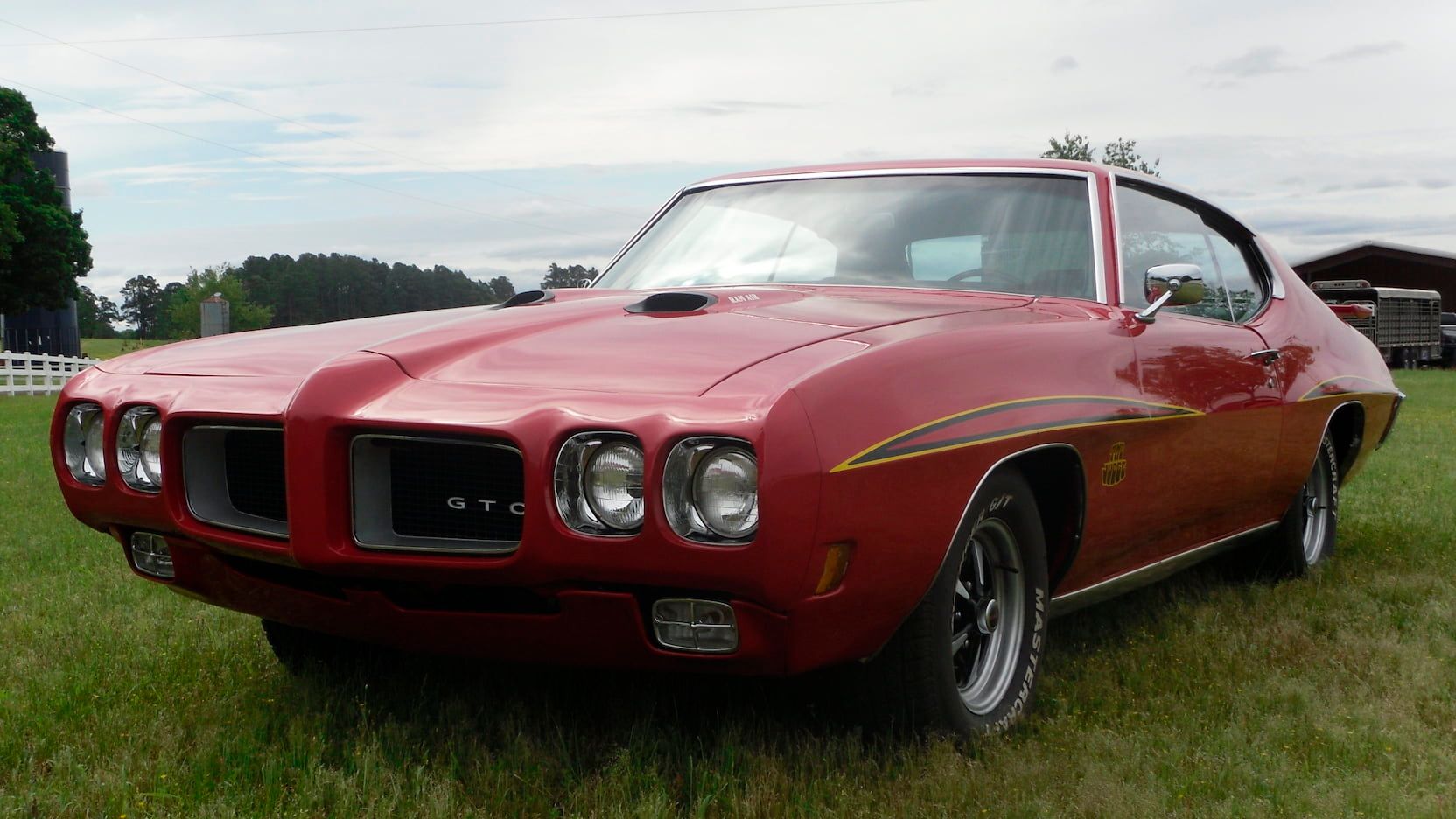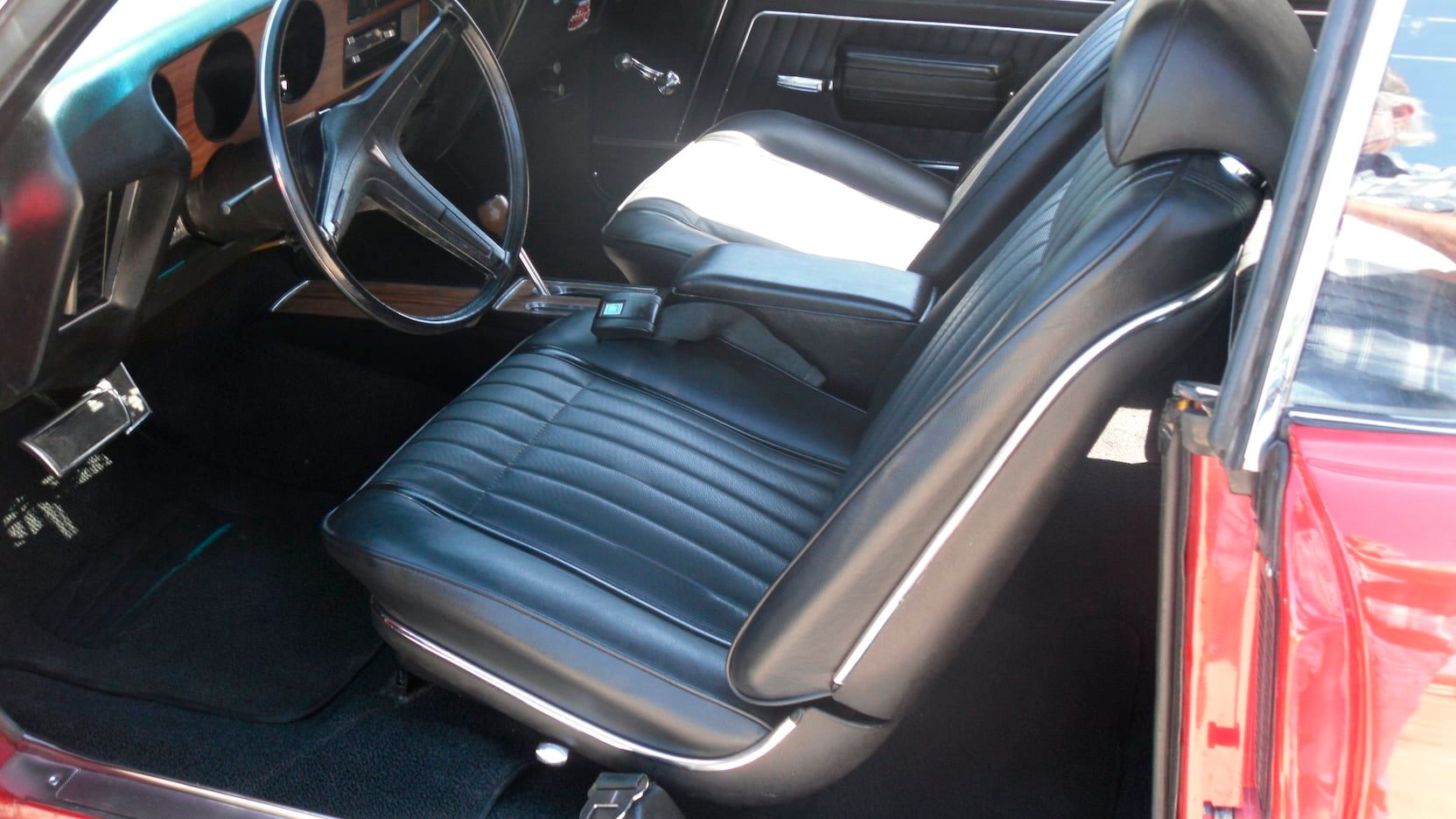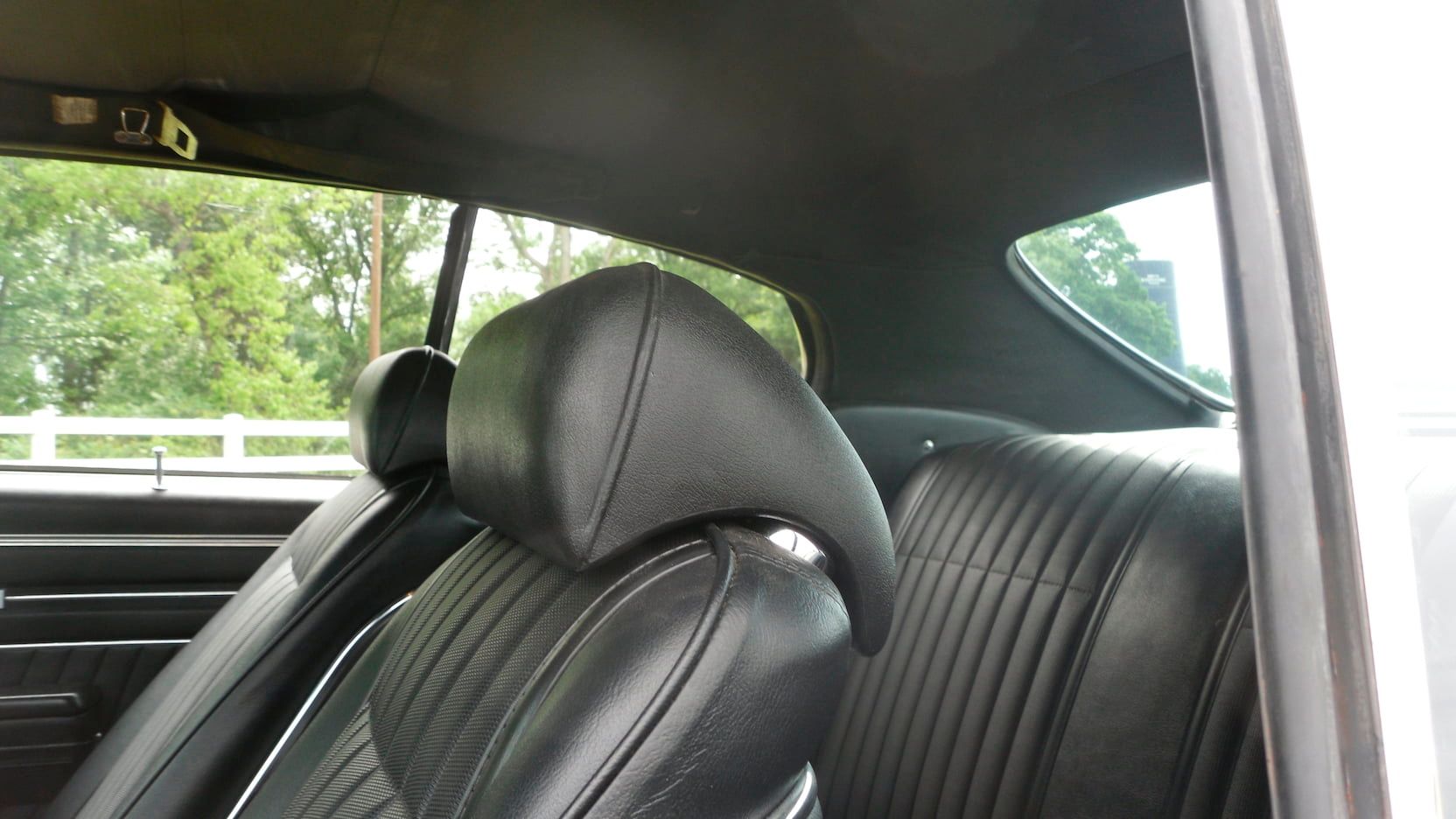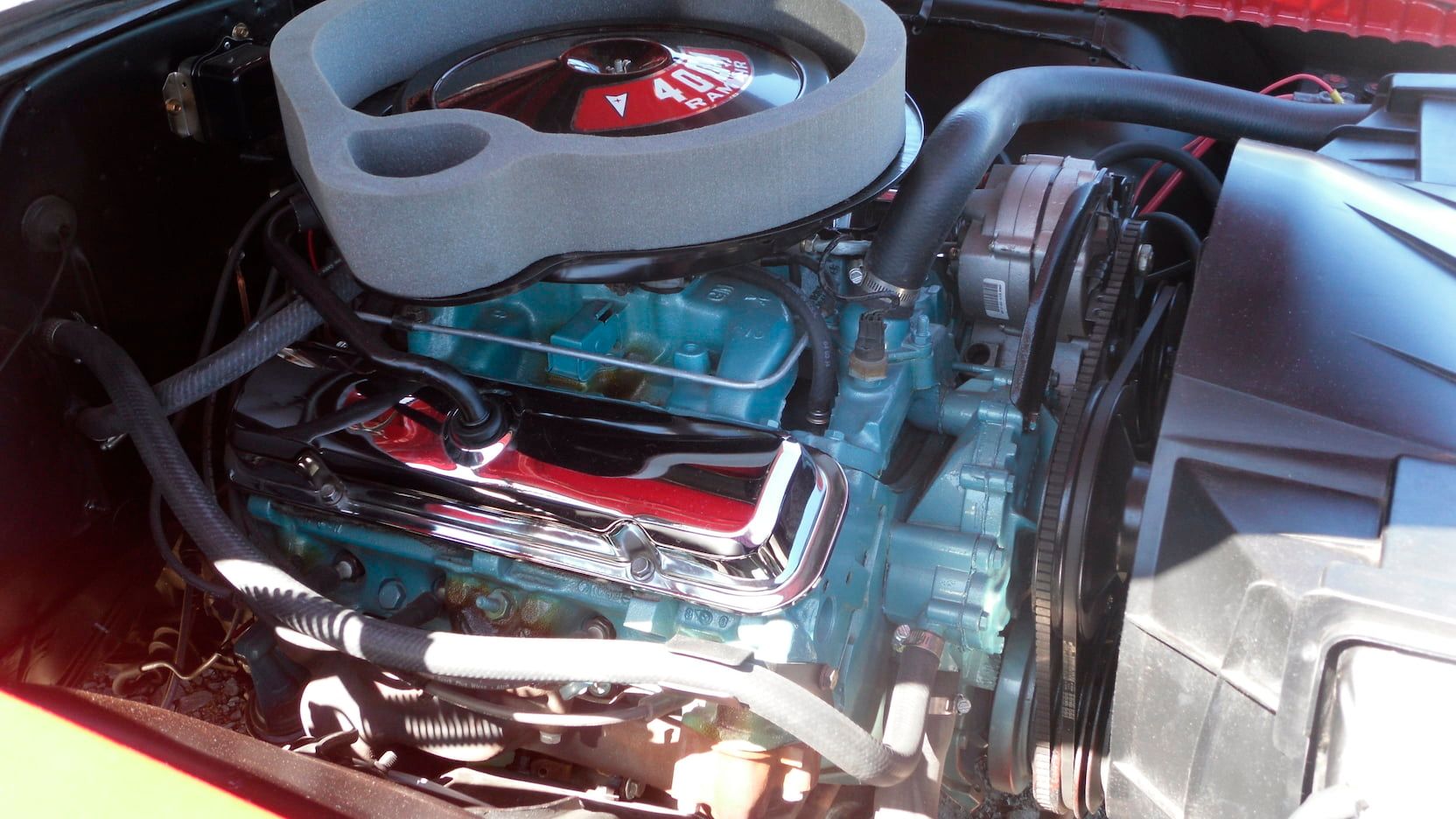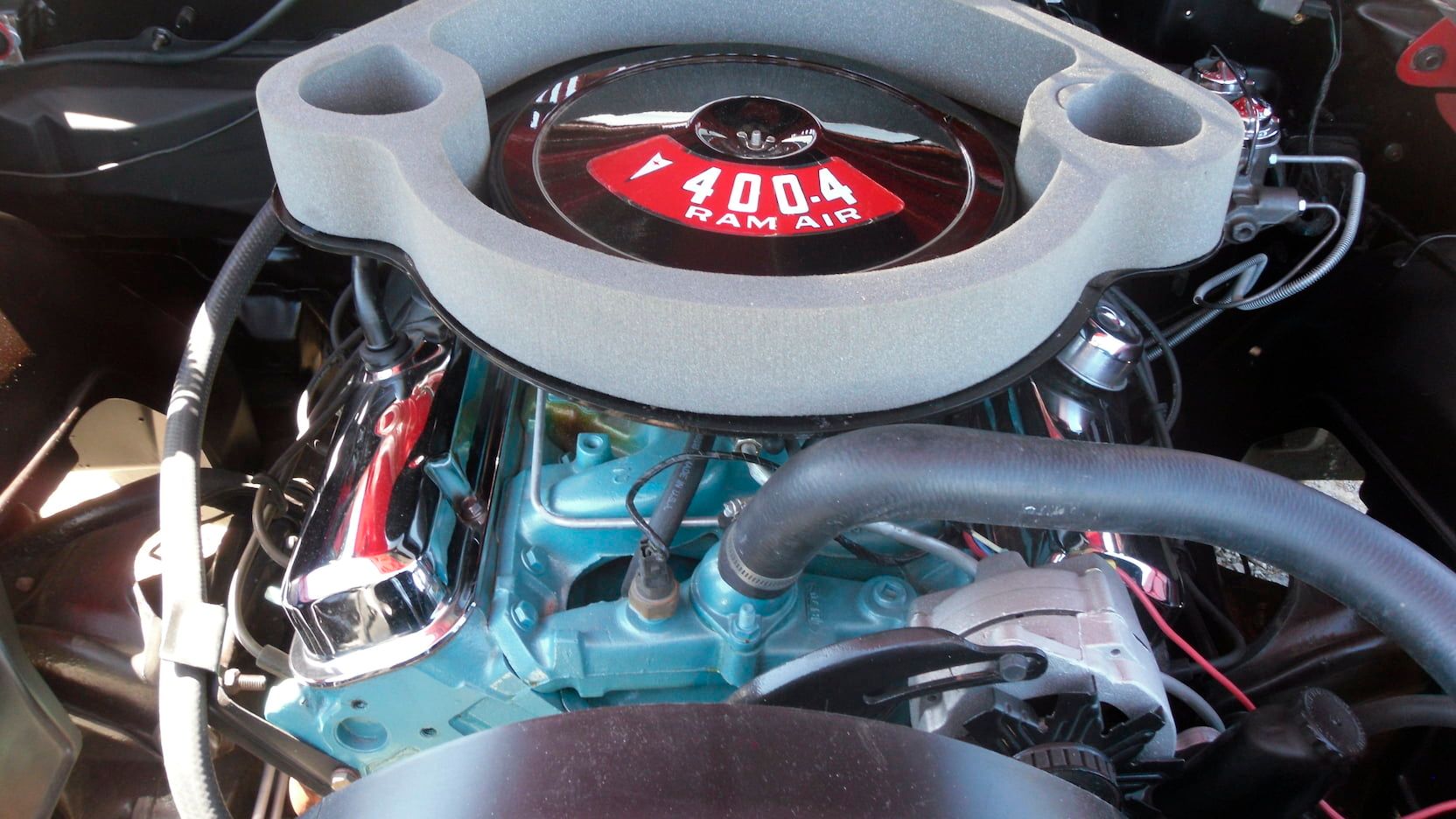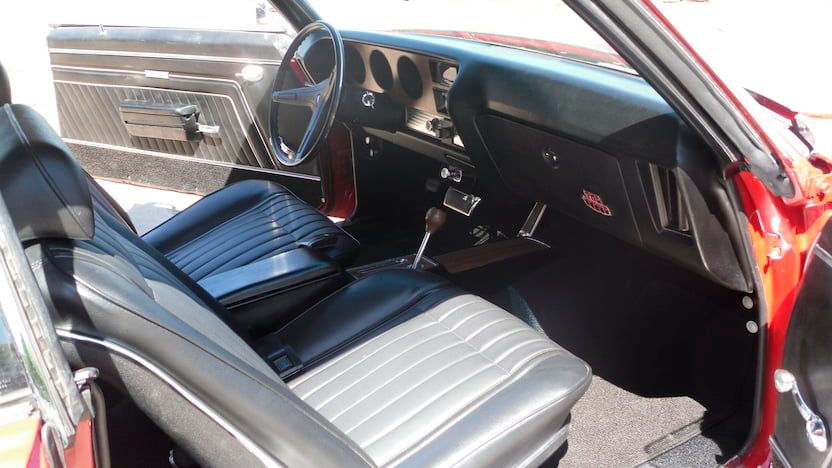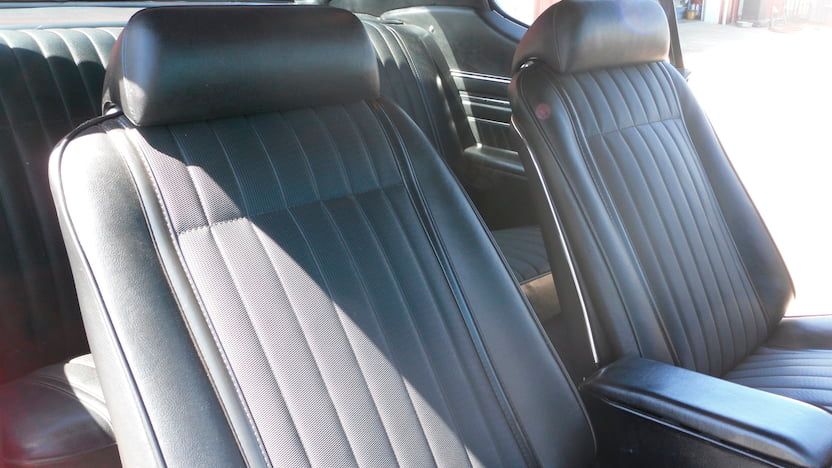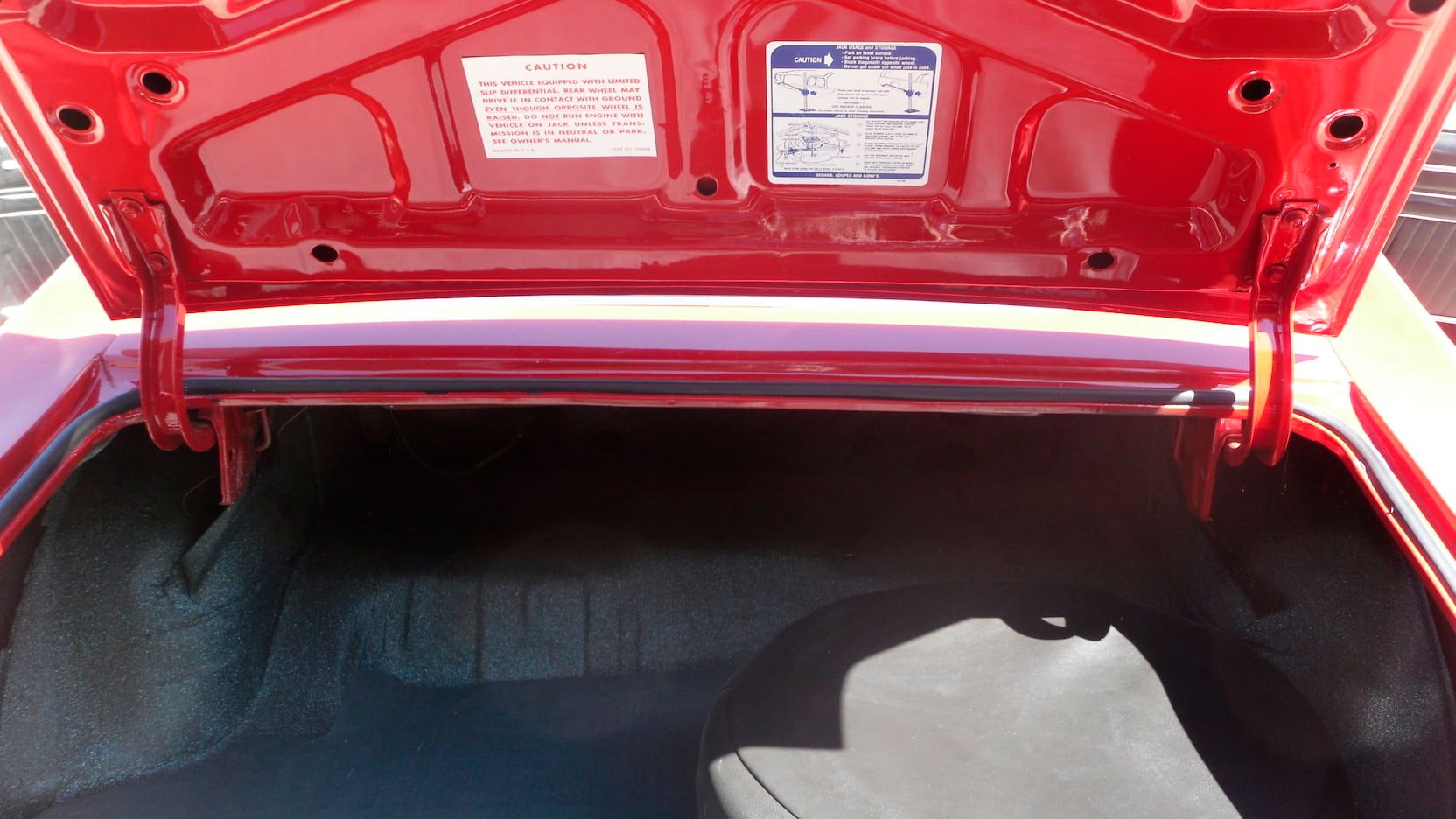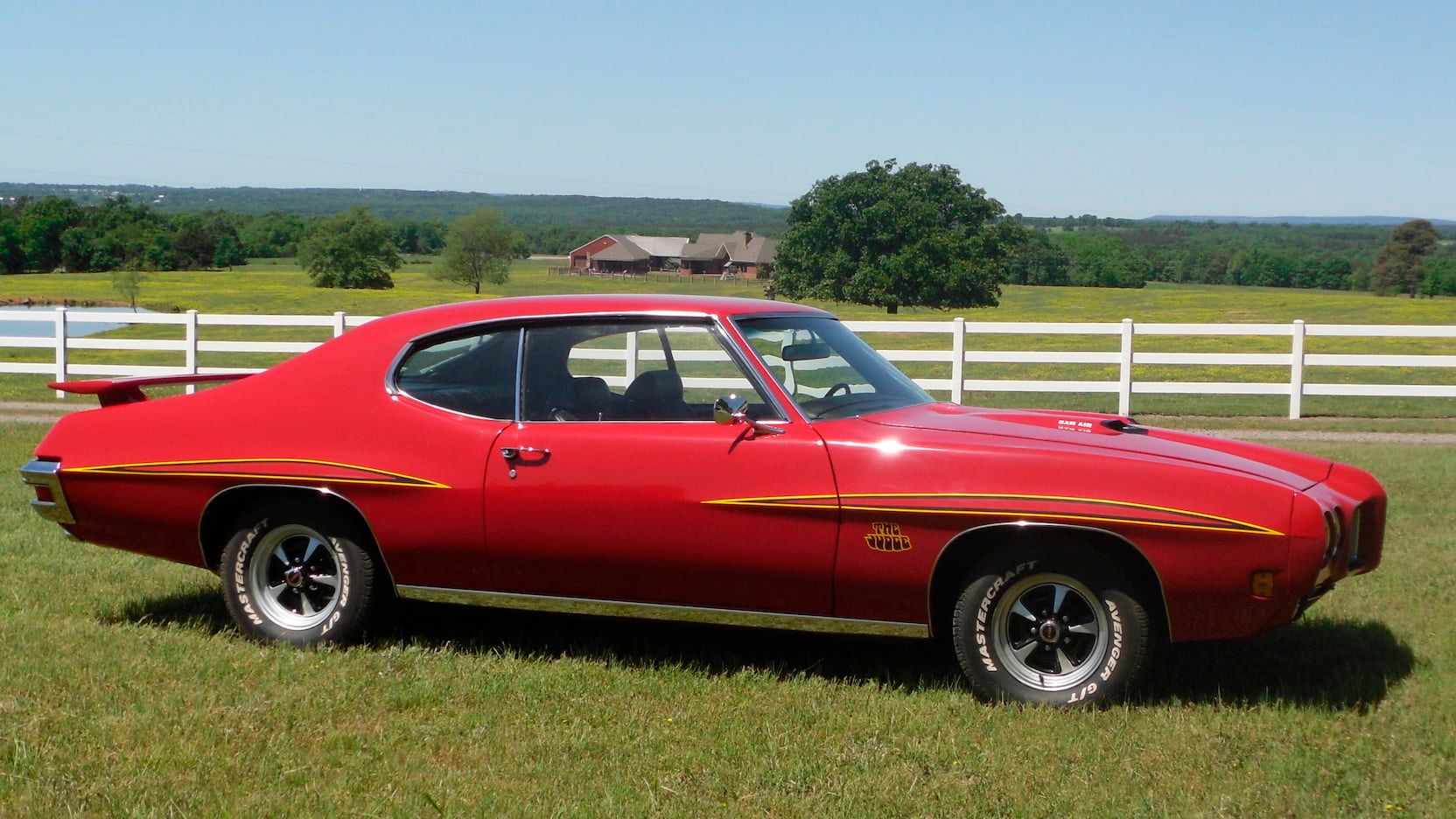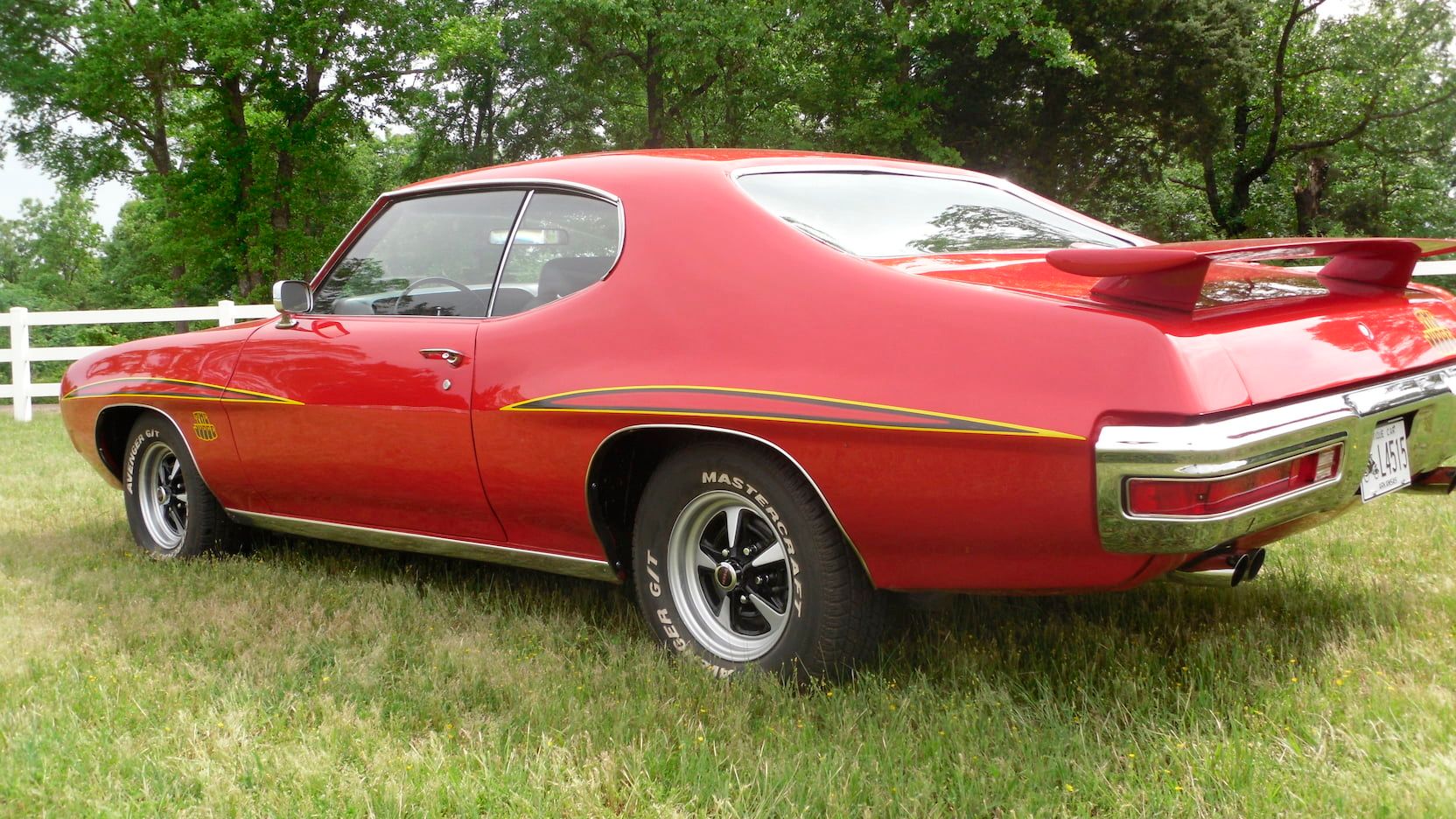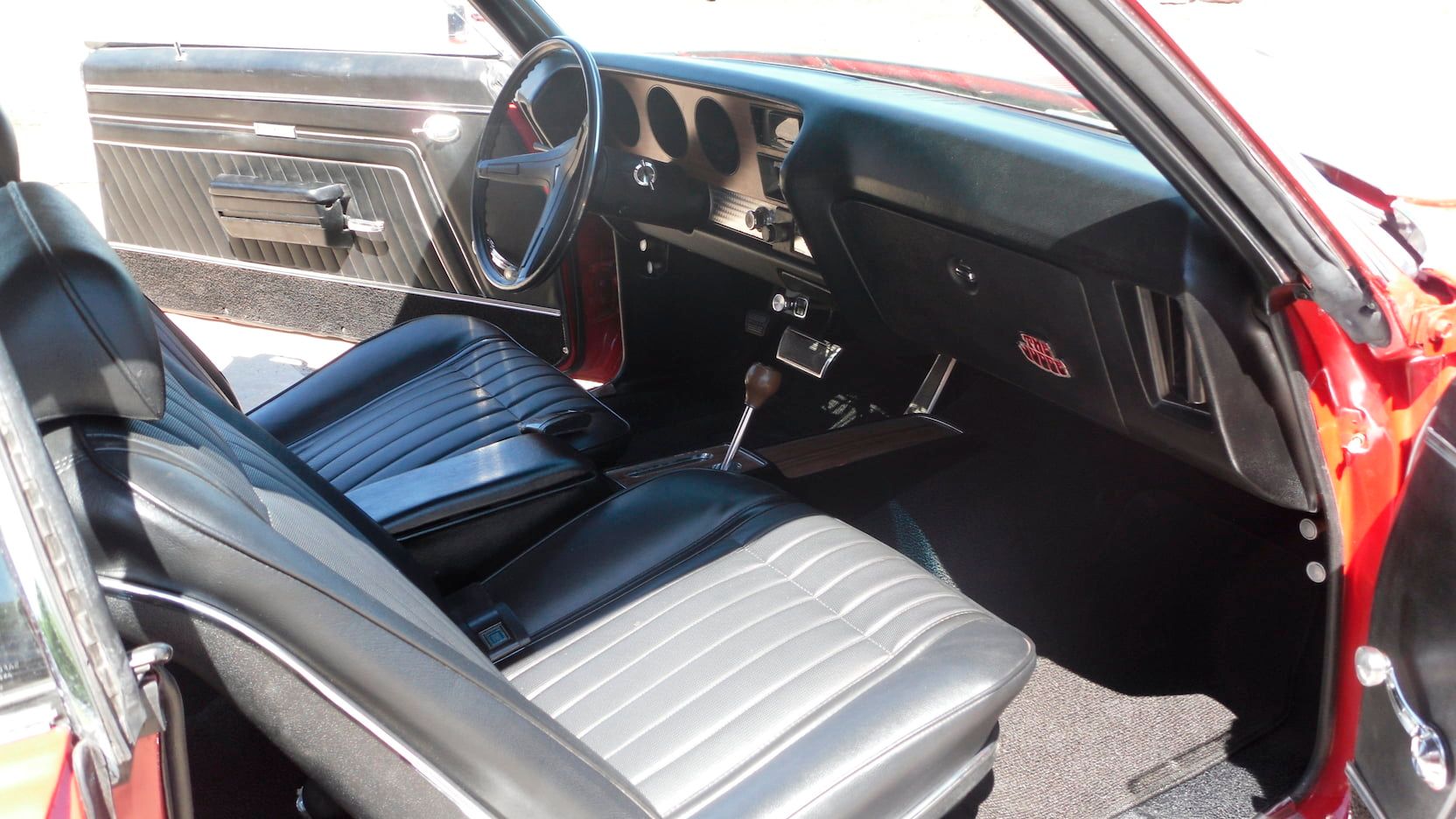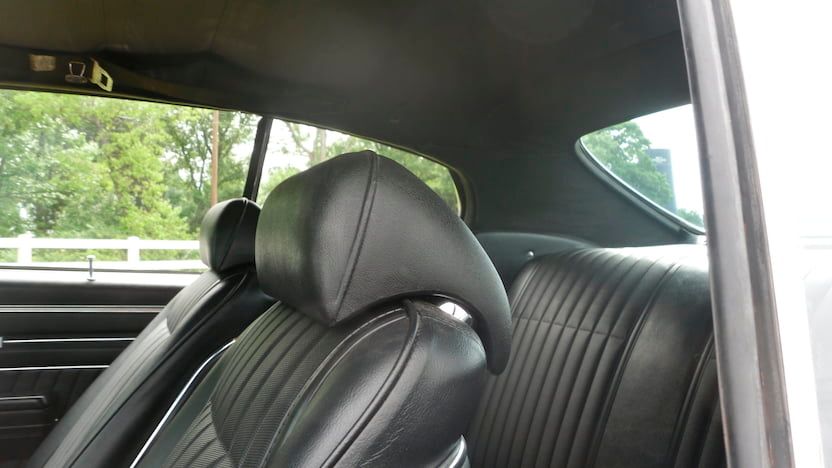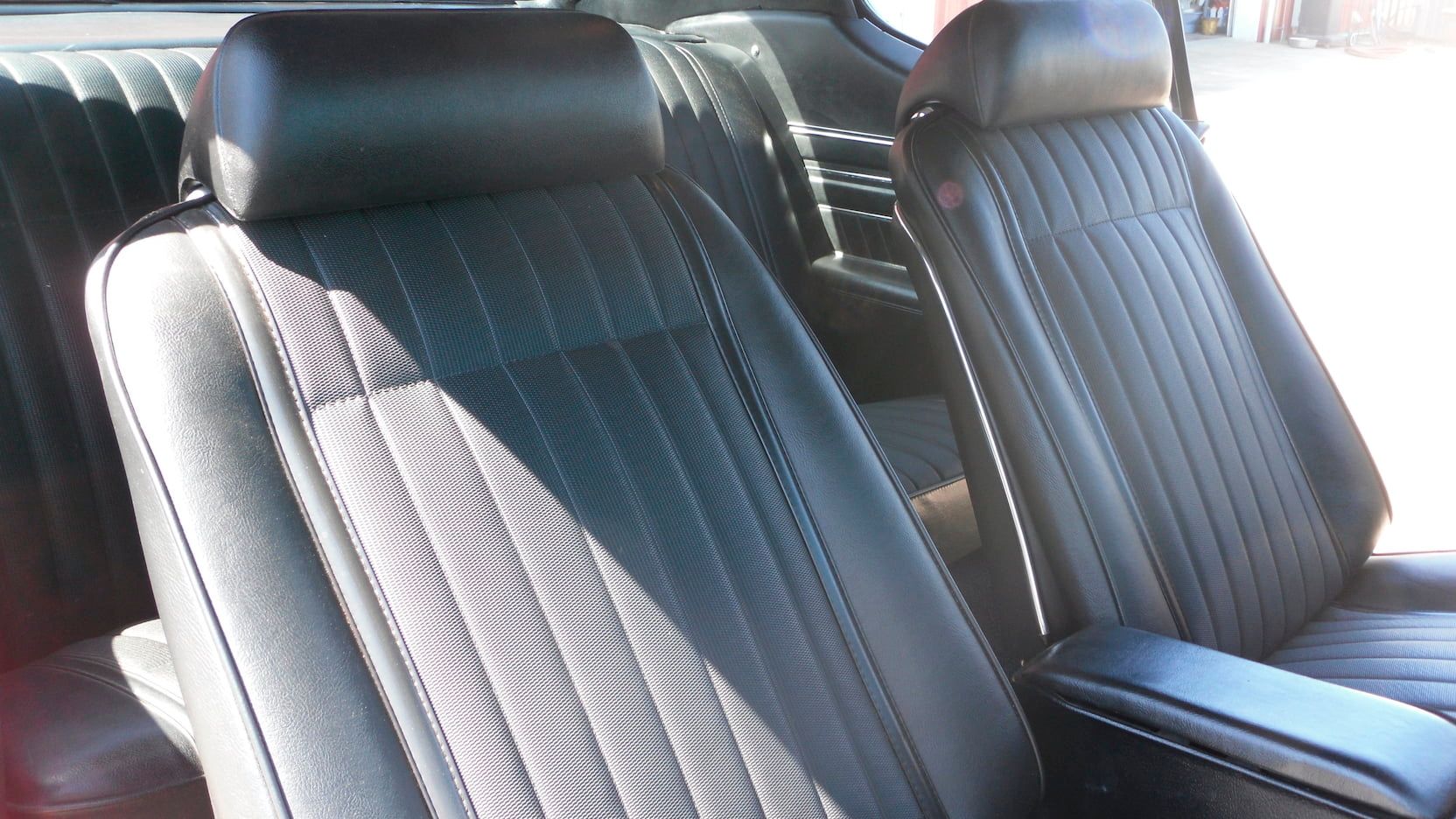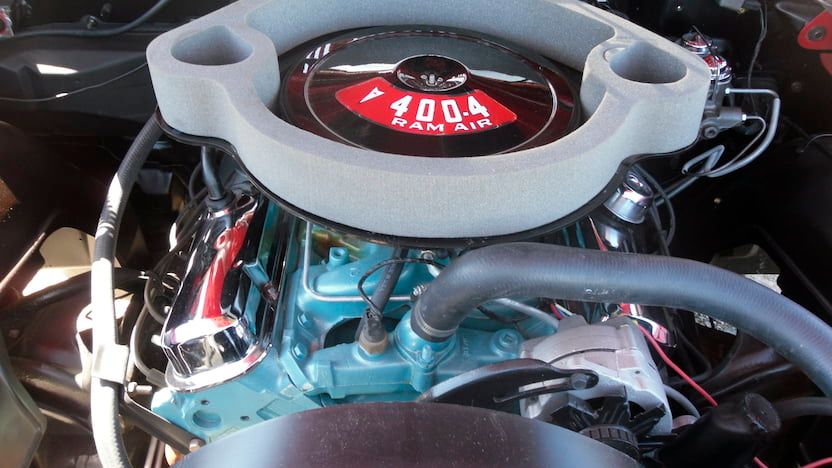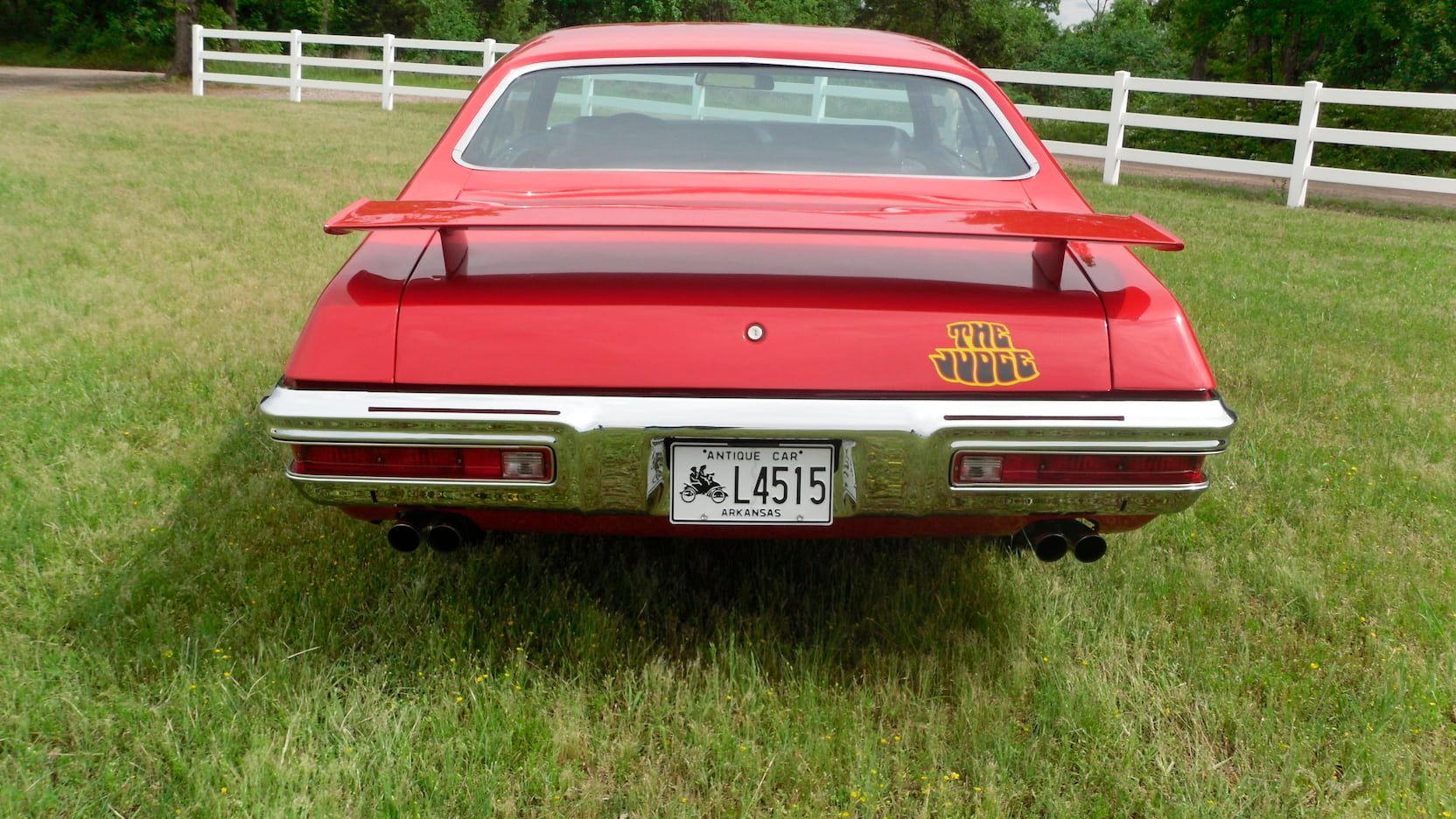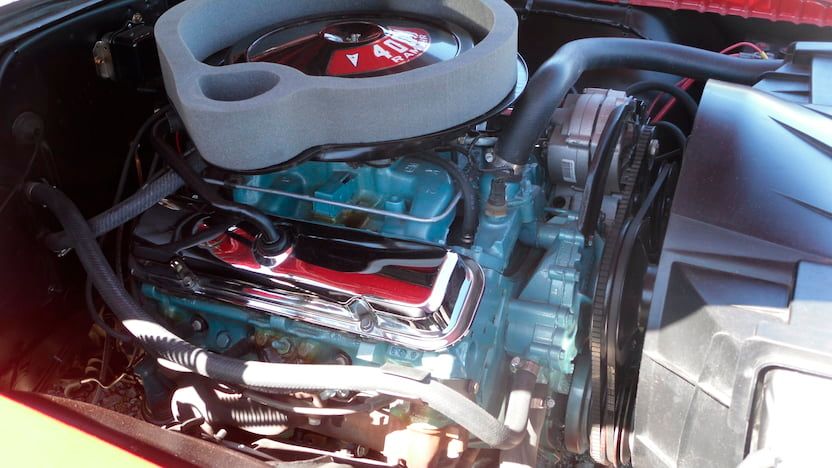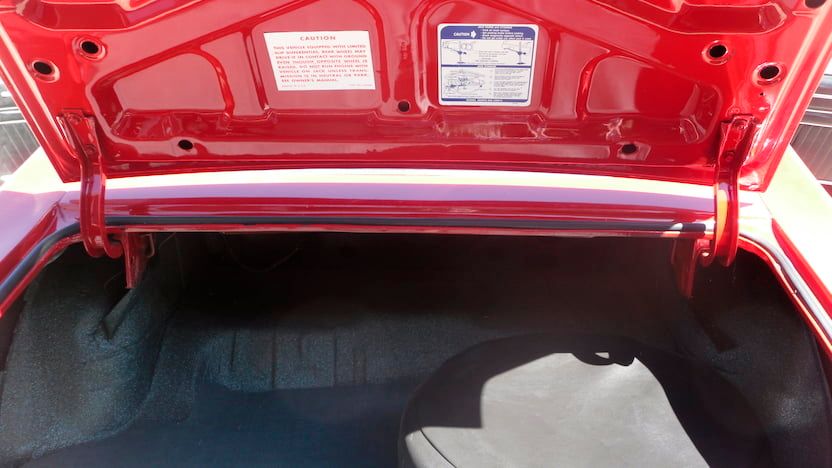The Pontiac GTO is widely regarded as one of the first muscle cars but, by 1970, even one of the stalwarts of the segment wasn't able to sell as it once did. Still, The GTO of 1970 remains a cornerstone example of muscle cars at their absolute peak.
The Pontiac GTO was born as a sportier version of the Tempest, aimed at a younger clientele. The car debuted in 1964 and by-passed in the process GM's policy that was limiting A-body intermediate models to a maximum engine capacity of 5.4-liters. As such, the original Tempest GTO came with the 6.4-liter V-8 that was also used by the larger Bonneville and Catalina models.
By 1970, the GTO had lost most of its chromed trim, instead sporting an Endura polyurethane nose and aggressively flared fenders. Of the 40,149, GTOs built in 1970, only 3,797 were ordered with the Judge trim level that had been introduced the year before. Sales kept plummeting from then on thanks to ever-increasing insurance costs, stringent pollution-related rules, and regulations and a general shift in the market's interest from performance cars to economy cars just as the oil crisis hit.
Keep reading to learn more about the 1970 Pontiac GTO Judge
1970 Pontiac GTO Judge
- Make: Array
- Model: 1970 Pontiac GTO Judge
- [do not use] Vehicle Model: Array
1970 Pontiac GTO Judge Exterior
Two years later, the high-performance trim level of the mid-size second-generation Pontiac Tempest arrived and it bore the same name: GTO. According to a number of sources, the name was John Z. DeLorean's idea and it indeed paid homage to Ferrari's GTO which was already a two-time world champion in sports car racing by the time Pontiac's muscle car was unveiled. At first, within the engineering group - which was led by John DeLorean, Bill Collins, and Russ Gee - that developed the GTO, these three letters stood for "Grand Tempest Option".
The second-generation Pontiac GTO arrived in 1968 alongside GM's other models based on the A-body platform. It was characterized by a more compact fastback design with shorter overhangs front and rear. The car was, as such, shorter by almost 6 inches, the wheelbase measuring 112 inches. However, the weight went up by 75 pounds. 1968 is also when the Endura polyurethane nose was introduced. It could better cope with slow-speed impacts without deforming and came in the color of the rest of the bodywork. An 'Endura delete' option was available in 1968 which essentially replaced the composite nose with an old school chromed bumper of the same shape.
This more imposing moniker was chosen at the time because "Laugh-In was an extremely popular TV show and the line, 'Here Comes Da Judge' was shouted by comedian Flip Wilson on a weekly basis." Furthermore, "the connotation to the infamous phrase became Pontiac’s marketing ploy to increase GTO sales."
HowStuffWorks.com quote a line from a period Road Test magazine test of the Judge which perfectly describes the car: " "The Judge is not for people who are shy about being looked at." Undeniably, the GTO Judge was a bold proposition among a plethora of aggressive muscle cars back in 1970.
Up front, the hideaway headlights of the 1969 model have been ditched in favor of four standalone headlights, two on either side of the two-piece protruding nose grille separated by the same prow as before. The grilles themselves are recessed within the nostrils of the car's front end. Below the headlights, there are two sockets that hold the outboard fog lights.
The ridge created by the beaky nose that sticks up above the line of the headlights continues down the length of the GTO's hood all the way back to a pair of air scoops visibly displaying the 'Ram Air' designation on them. While minimal chrome ornamentation can be seen at the front, with the square headlight housing being a distinct exception, more chrome is used for the purpose of framing the side windows, the B-pillar, the windshield and the curve-edged back window. There's also the mirror-like bar added to the rocker panels.
From the side, you'll immediately single out the special Judge graphics above the front and rear wheels. The two-colored stripes form an eyebrow above the wheel arches. This is a departure from the 1969 striping which followed the car's hood line, swooping under the side windows and ending at once with the rear quarter windows. However, the Judge logo was kept.
The car sits on 15-inch Rally dished hubcaps with five imitated spokes, wrapped by Mastercraft Avenger G/T tires.
At the back, the fixed spoiler that's attached to the trunk springs into view. Supported by two struts, the wing should help keep the rear of the car in check. The wing sits taller than on the 1969 GTO and, instead of curving downwards at both ends, it's cut short by some narrow wing endplates.
New for 1970 was the wraparound rear bumper which incorporated the horizontally-mounted taillights that went around the car's rear corners. The chromed bumper also has room to host the number plate in the middle. Below the bumper, there are the four exhaust tips, two from each of the exhaust pipes.
1970 Pontiac GTO Judge Exterior Dimensions:
|
Wheelbase: |
112 inches |
|
Length: |
202.9 inches |
|
Width: |
76.7 inches |
|
Height: |
52.3 inches |
1970 Pontiac GTO Judge Interior
The GTO has a rather spacious interior that belies its fastback proportions. You get two bucket seats up front and a bench seat in the rear. All in all, five people can be jammed inside a car like this, although they most definitely won't enjoy the ride.
The black three-spoke steering wheel sits in front of three large gauges. This model features the tachometer on the dash, not on the hood like some of the other Pontiacs produced between 1967 and 1971. The driver's half of the dash is separated from the passenger's by some curved dividers of sorts. Also on the driver's side, there are the radio and the ventilation controls. Basically, all that the passenger gets is the sight of the Judge sticker, the glove box, and a vertically-mounted air vent.
This model comes with a wood-trimmed center console which houses the shifter for the 3-speed automatic transmission. The knob on the shifter is adequately woody to fit in with the rest of the scenery. The center console rises towards the back to host an armrest between the seats.
1970 Pontiac GTO Judge Drivetrain
The 1970 Pontiac GTO was available with three 6.6-liter V-8s, namely the basic 350-horsepower unit, the Ram Air III, and the Ram Air IV, as well as the 7.5-liter 455 HO V-8 engine. The Ram Air III, which this car has, was said to develop 366 horsepower and 445 pound-feet of torque but it's often said that these numbers were very conservative as the Ram Air III actually churned out about 400 gross horsepower.
The horsepower reached the back wheels through one of three gearboxes. First, there was a meager 3-speed manual which was topped by a 4-speed manual. Then there was also the 3-speed Turbo Hydra-Matic transmission which this car has.
Suspension on the 1970 GTO was the same as on a '69 model, independent up front with a solid axle at the rear, but it now came with anti-roll bars at both ends. This minimized the car's tendency to roll through corners although the 58/42 weight distribution still made it prone to understeer.
1970 Pontiac GTO Judge Specifications:
|
Engine: |
6.6-liter OHV naturally-aspirated 16-valve V-8 |
|
Output: |
366 horsepower and 445 pound-feet of torque |
|
Compression ratio: |
10.5:1 |
|
Fuel feed: |
Single Quadrajet 4-barrel carburetor |
1970 Pontiac GTO Judge Pricing
You can find a restoration-ready GTO for as little as $17,000. With that being said, cars that are actually driveable and in good condition change hands for about $25,000 to $40,000. When new, the GTO had a base MSRP of about $23,500.
The GTO Judge of 1970 is a rare car as only 3,629 hardtop fastback coupes were made that year. While they weren't popular in their day, they have become over time which is why some examples command prices above the $55,000 mark. Convertibles easily sell for over $65,000, though.
1970 Pontiac GTO Judge Competition
Plymouth Road Runner
You can't talk about the GTO Judge without mentioning one of its arch-rivals, the Road Runner. It was Plymouth's budget mid-size performance car positioned below the more expensive GTX. It was built on the B platform shared with the Plymouth Belvedere and Satellite.
The Road Runner was named after the ostrich-like character in the 'Wile E. Coyote and The Road Runner' cartoon series. Plymouth paid Warner Brothers almost $400,000 in today's money to be able to use the name and logos featuring the Road Runner character on their new muscle car.
The 1970 Road Runner featured a restyled front and rear end. The grille up front looked more aggressive, narrowing down after hugging the four headlights, placed two on each side. The car came with a wide hood scoop, matte-black striping, air inlets on the side and a plethora of Road Runner logos around the body. It came with a 6.3-liter V-8 engine capable of 335 horsepower. More oomph was on the way in the form of the 426 7.0-liter Hemi and the 7.2-liter '440 Six Pack' V-8 which had three two-barrel Holley carburetors and developed 390 horsepower at 4,700 rpm and 490 pound-feet of torque at 3,200 rpm. Sadly, Road Runner sales went down by almost 50% in 1970, from over 80,000 dispatched in 1969 to just 41,000. That was still, though, about 1,000 more than the total GTO production figure for 1970.
Read our full review on the 1968 - 1980 Plymouth Road Runner.
Oldsmobile 442
1970 was the peak year of the 442. As a model, it was still based on the Cutlass but now came standard with the 7.5-liter big-block V-8. That's because General Motors, who wanted to win the muscle car war, dropped the cap on engine capacity that year. The huge engine only put out about 365 horsepower, but torque was plentiful at 500 pound-feet. 15 more horsepower were on hand through the W30 option.
The W30 option, though, did much more than just hike the power output a bit. A 442 W30 had the sheet metal hood replaced with a fiberglass one, as well as a low-restriction air cleaner, aluminum intake manifold, special camshaft, cylinder heads, distributor, and carburetor.
The 442 also looked different. It had four headlights separated by two horizontally-positioned grilles divided by a protruding nose painted in the color of the bodywork. The taillights were different as well, being mounted vertically.
Final Thoughts
The Pontiac GTO Judge is a car that comes from the final heydays of the muscle cars. It looks more modern than most performance American cars of its time although it might not be the prettiest of the lot. At a time when everyone was trying to come up with the most eye-grabbing name like the Road Runner or the Boss, Pontiac's Judge is one of the best.
The GTO has now reached the hallowed status of a rare and very sought-after classic car. With such a small production output in period, you'd be hardpressed to find reasons to back the idea that prices might go down at any point in the near future before oil completely runs out.

